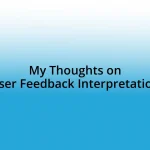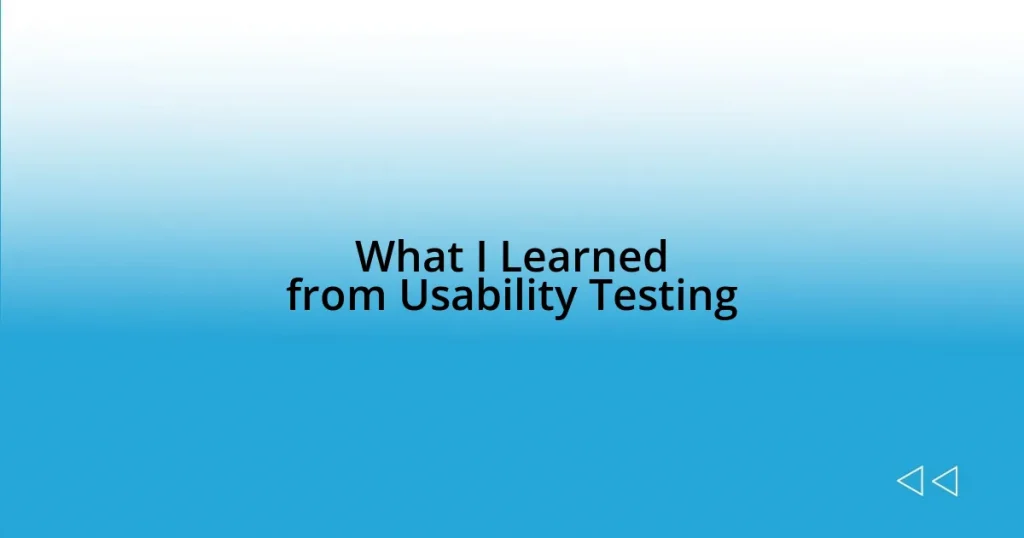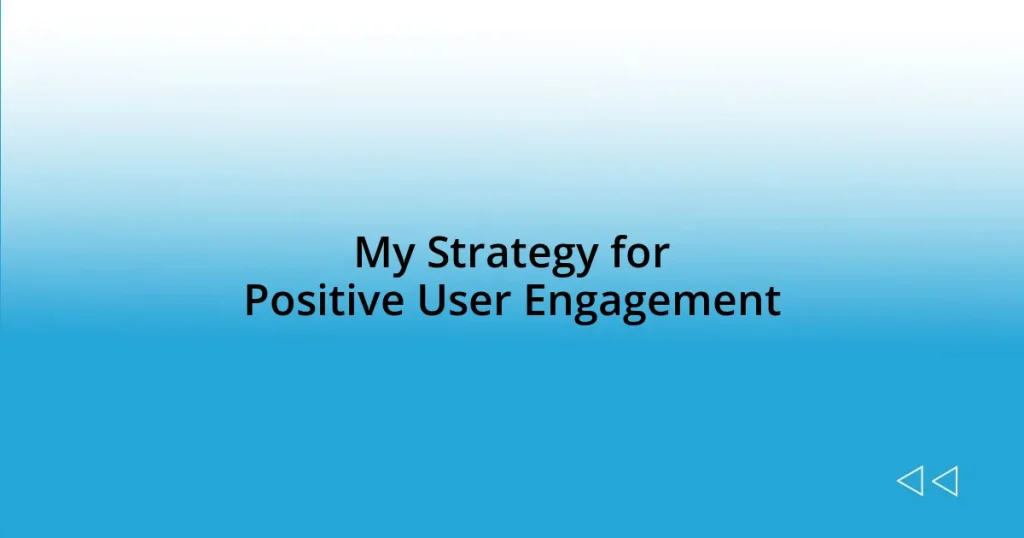Key takeaways:
- Feedback fosters personal and professional growth, highlighting strengths and blind spots.
- Creating a culture of open communication through regular feedback sessions enhances team collaboration and trust.
- Effective feedback involves being specific, using “I” statements, and considering the timing of delivery.
- Emotional reactions can hinder feedback; empathy and follow-up are crucial for constructive conversations.

Understanding the role of feedback
Feedback plays a crucial role in shaping our professional journey. I remember a time early in my career when I received constructive criticism on a project I was genuinely proud of. At first, it stung; however, I quickly realized that this feedback provided me with a lens to view my work from a different perspective, ultimately enhancing my skills.
When we embrace feedback, we open ourselves up to growth. Isn’t it fascinating how a few pointed words can pivot our path? I found that the most impactful feedback I received was often tied to my blind spots—areas I hadn’t even considered. It challenged me, yes, but it also fueled my desire to learn and improve, transforming my initial discomfort into motivation.
Moreover, feedback fosters collaboration and trust within a team. For instance, during a particularly challenging project, our team held regular feedback sessions that not only improved our outcomes but also created a culture of open communication. This experience taught me that feedback isn’t just a tool for development; it’s a bridge that connects us, helping cultivate stronger relationships and a shared vision in the workplace.

The importance of professional feedback
Feedback is essential for professional development. I recall receiving feedback on a presentation I thought was stellar. Initially, I felt defensive, but when I took the time to digest the suggestions, I understood that refining my delivery could really resonate with my audience. The realization that this input was designed to elevate my strengths shifted my perspective entirely.
Professional feedback acts as a mirror reflecting our strengths and areas for improvement. I once had a mentor who would often ask me, “What’s your takeaway from this critique?” At first, I shrugged off the question, but as I began to recognize patterns in the feedback I received, I started to see how I was evolving. Each piece of advice was an opportunity to deepen my understanding and hone my skills, making me a more competent professional.
Furthermore, engaging in a feedback loop creates a vibrant workplace culture. I remember a project where we shared feedback in a casual setting, over coffee rather than in stiff meetings. The relaxed atmosphere encouraged authenticity; we could express our thoughts openly, leading to innovative ideas that probably wouldn’t have surfaced otherwise. This experience truly highlighted the importance of professional feedback—it’s not merely about critique, but also about sparking creativity and fostering teamwork.
| Key Aspects | Benefits |
|---|---|
| Opportunities for growth | Enhances skills and abilities |
| Improved self-awareness | Identifies blind spots |
| Team collaboration | Builds trust and innovation |
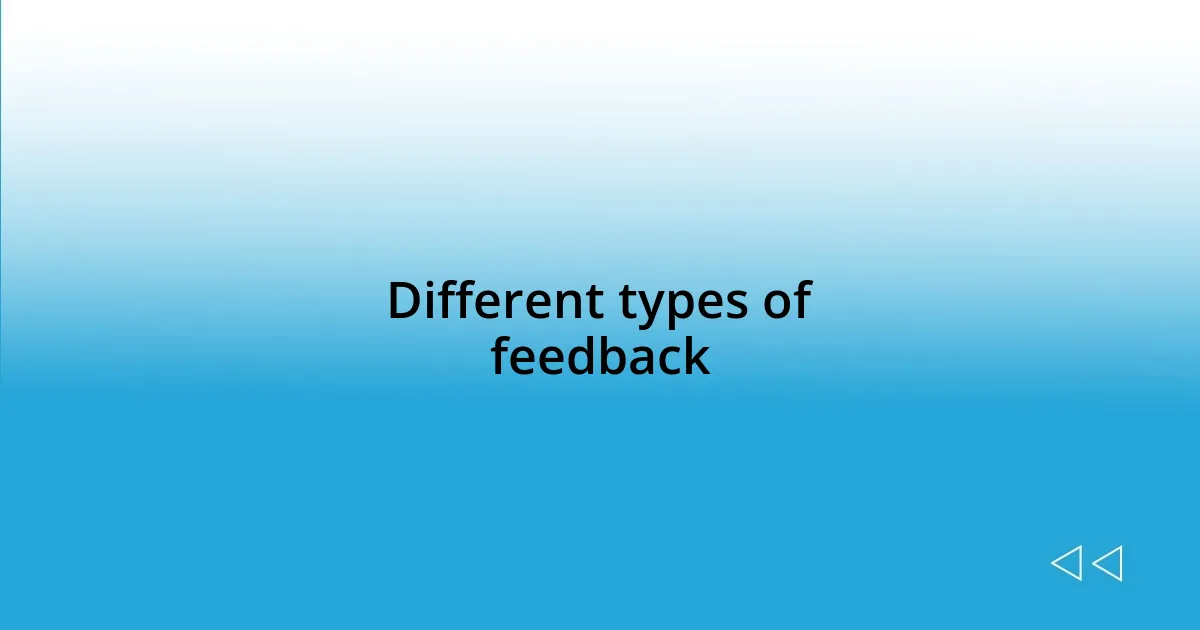
Different types of feedback
Feedback can manifest in various forms, and each type serves a distinct purpose in our development. I’ve encountered two primary categories in my journey: formal and informal feedback. Formal feedback typically comes through structured channels like performance reviews or evaluation forms, providing a comprehensive overview of your strengths and areas to improve. In contrast, informal feedback arises in everyday interactions, such as a quick chat with a colleague or spontaneous input from a manager, often feeling more personal and immediate.
Here’s a quick breakdown of the different types of feedback I’ve experienced:
-
Constructive Feedback: This type focuses on specific areas for improvement and offers actionable suggestions. I once received constructive feedback on my writing from a colleague who suggested clearer transitions between ideas. It was eye-opening and truly enhanced my clarity.
-
Positive Feedback: This highlights what you’re doing well, boosting morale and motivation. I remember receiving positive feedback after leading a successful team project, and it genuinely encouraged me to take on more leadership roles.
-
Peer Feedback: Feedback from colleagues can offer different perspectives. I valued insights from a teammate who noticed nuances in my communication that I hadn’t considered, prompting me to adjust my style for better engagement.
-
Self-Feedback: Reflecting on my performance has become a crucial practice. I often jot down my thoughts after projects, allowing me to evaluate my actions and make future adjustments. It feels empowering to take ownership of my growth journey.
Through these experiences, I’ve realized that each type of feedback not only shapes our professional development but also reflects the dynamics of our relationships at work. Engaging with feedback, in all its forms, has forged a deeper understanding of both myself and my colleagues, turning everyday interactions into significant learning opportunities.
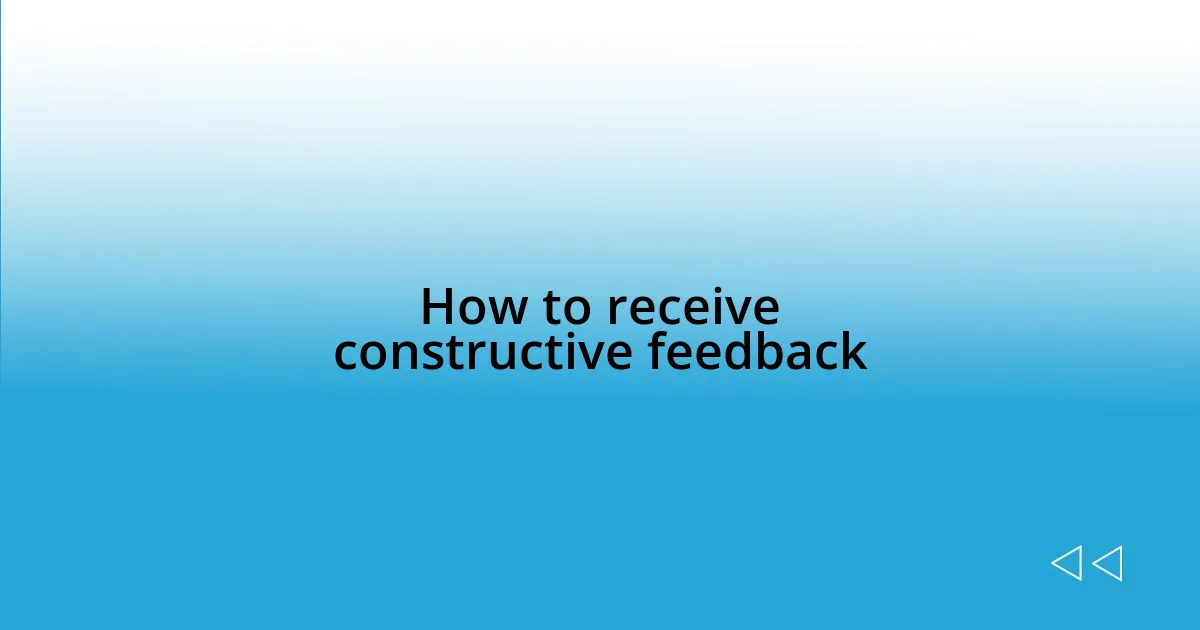
How to receive constructive feedback
Receiving constructive feedback can sometimes feel daunting, but I’ve learned it’s all about the mindset. I vividly remember a time when I got feedback on a project I was deeply attached to. My first reaction was to dismiss it, thinking, “What do they know?” But after giving it a moment’s thought, I realized their perspective could reveal aspects I hadn’t noticed. That shift in thinking opened the door to real growth.
A useful strategy I now embrace is active listening during feedback sessions. I often remind myself to listen, really listen, rather than just prepare my rebuttal. When I trained a colleague who had trouble presenting ideas, I took a moment to absorb their feedback, asking clarifying questions. This not only helped them feel heard, but also provided me with insights that transformed my own presentation skills. It makes me wonder, how much more could we grow if we genuinely leaned into feedback?
Finally, I’ve found it beneficial to express gratitude when receiving feedback. After a particularly tough review, I thanked my manager for their honesty, which led to a deeper conversation about my career trajectory. This simple act turned what could have been a negative experience into a collaborative dialogue about my future. Isn’t it fascinating how a small shift in approach can make such a significant difference?

Techniques for giving effective feedback
One technique I’ve found incredibly effective for giving feedback is being specific. I recall a time when I gave feedback to a team member on a presentation. Instead of saying, “It was good,” I pointed out particular slides where their visuals were impactful and suggested refining the opening statement to grab attention better. This focus on details made my feedback actionable and clear. When feedback is precise, it transforms into a practical roadmap for improvement.
Another approach I value is using “I” statements to express my observations and feelings. For instance, I once addressed a coworker’s late submissions by saying, “I felt concerned when deadlines were missed because it affected our team’s workflow.” This way, my feedback felt more personal and less confrontational. By sharing how their actions impacted me and the team, I fostered an open conversation rather than a defensive reaction. Have you tried this technique? I’ve found it nurtures a more positive dialogue.
Finally, timing really matters. I remember delivering feedback to a colleague right after a project ended, while the details were still fresh. While they appreciated my input, I realized a few days later that they needed some time to decompress before diving into critiques. Now, I consider waiting until emotions settle before revisiting certain discussions, allowing for a more reflective environment. Isn’t it interesting how adjusting timing can affect the reception of feedback?

Overcoming challenges in professional feedback
Sometimes, the biggest challenge in giving and receiving feedback lies in our emotional reactions. I vividly recall a session where I had to provide feedback to a teammate who was visibly anxious. As I delivered my observations, I noticed their body language stiffen. It struck me then how crucial it is to create a safe space where our emotional responses don’t overshadow the message. I’ve learned that empathy can turn a potentially awkward moment into a constructive one. How often do we overlook this aspect in our interactions?
Navigating defensiveness is another hurdle I’ve encountered. A while back, I found myself in a situation where I was receiving feedback but felt my intentions were misunderstood. Rather than shutting down, I chose to engage by asking questions to clarify their points. This approach allowed me to turn the defensive energy into a discussion, ultimately leading us to a shared understanding. Isn’t it amazing how a proactive mindset can ease tension during these conversations?
Lastly, following up after feedback can be a game changer. I once provided feedback on a project to a junior team member and later discovered they felt overwhelmed by the suggestions. Taking the time to check in with them a week later revealed their struggles and also the progress they’d made. This experience taught me that feedback doesn’t end with a single conversation; it’s an ongoing dialogue. How often do we forget to establish that continuity? By nurturing our feedback relationships, we pave the way for lasting growth.






